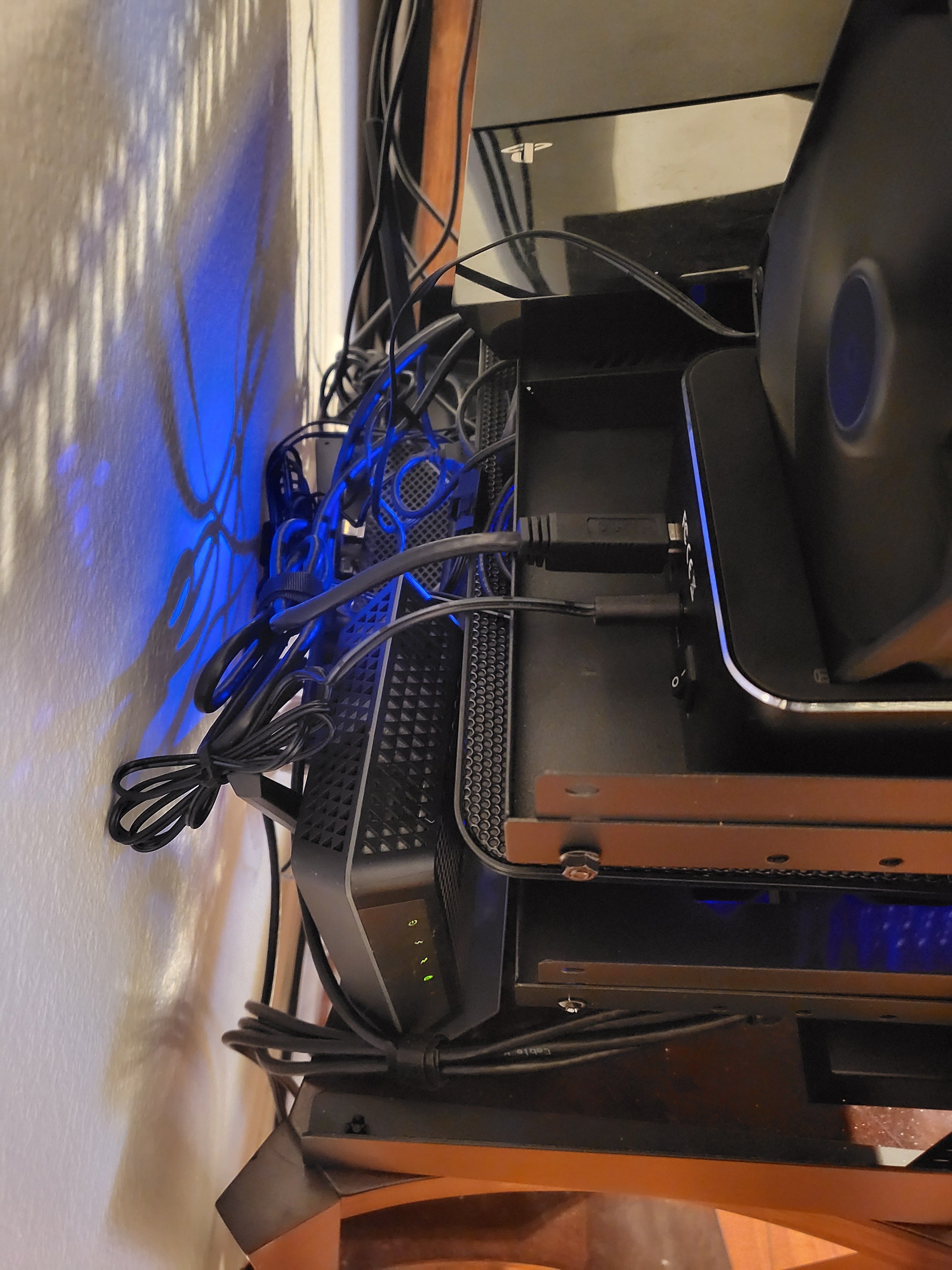
Only use jellyfin. Have a list of things want to update… but it works for now.
Yes that is a laptop usb cooler used as supplemental placebo cooling. Also a pc fan I have propped up against the hard drive feeding into the pi.
Can’t recall last time used the ps4 or switch. But they’re there
literally one these with loads of RAM and a wifi card, so i can fit all the shenanigans in one box
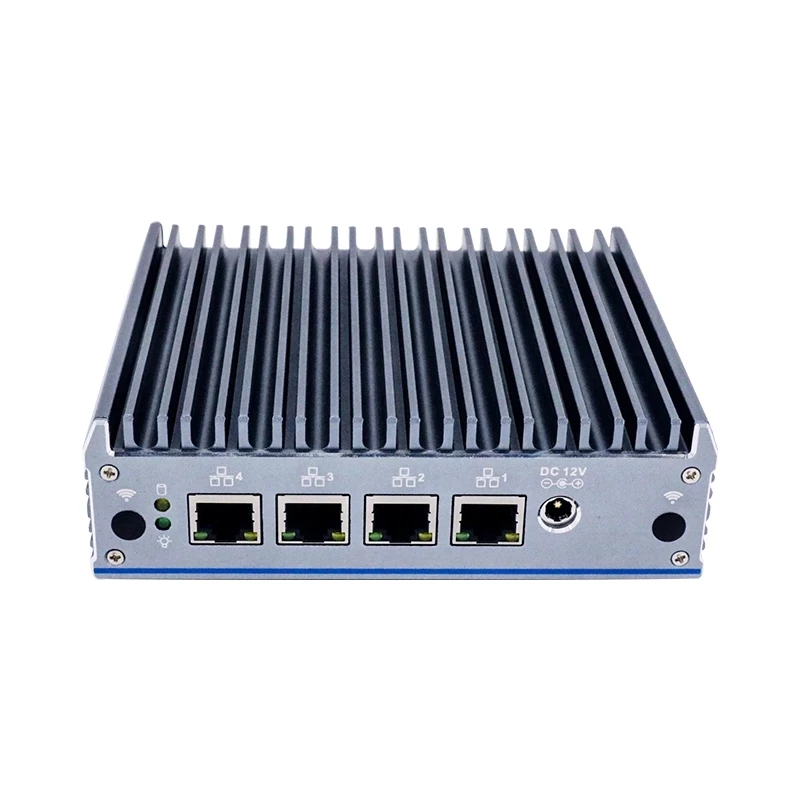
I may need this now. Would you are the brand? A recommendation?
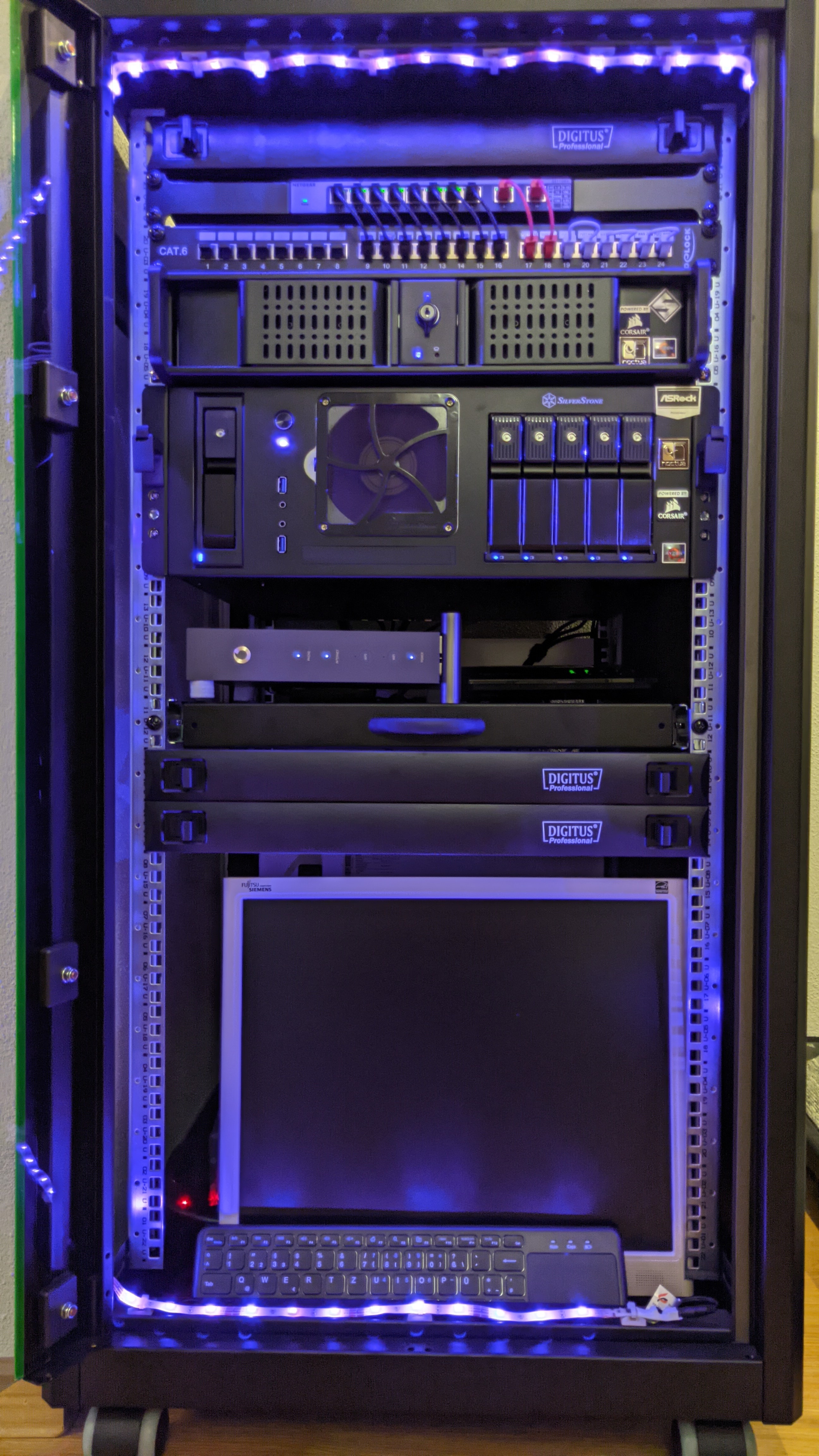

noice
That’s a nice setup. I am weirdly jealous of the sliding shelf. The CS350B is very nice as well.
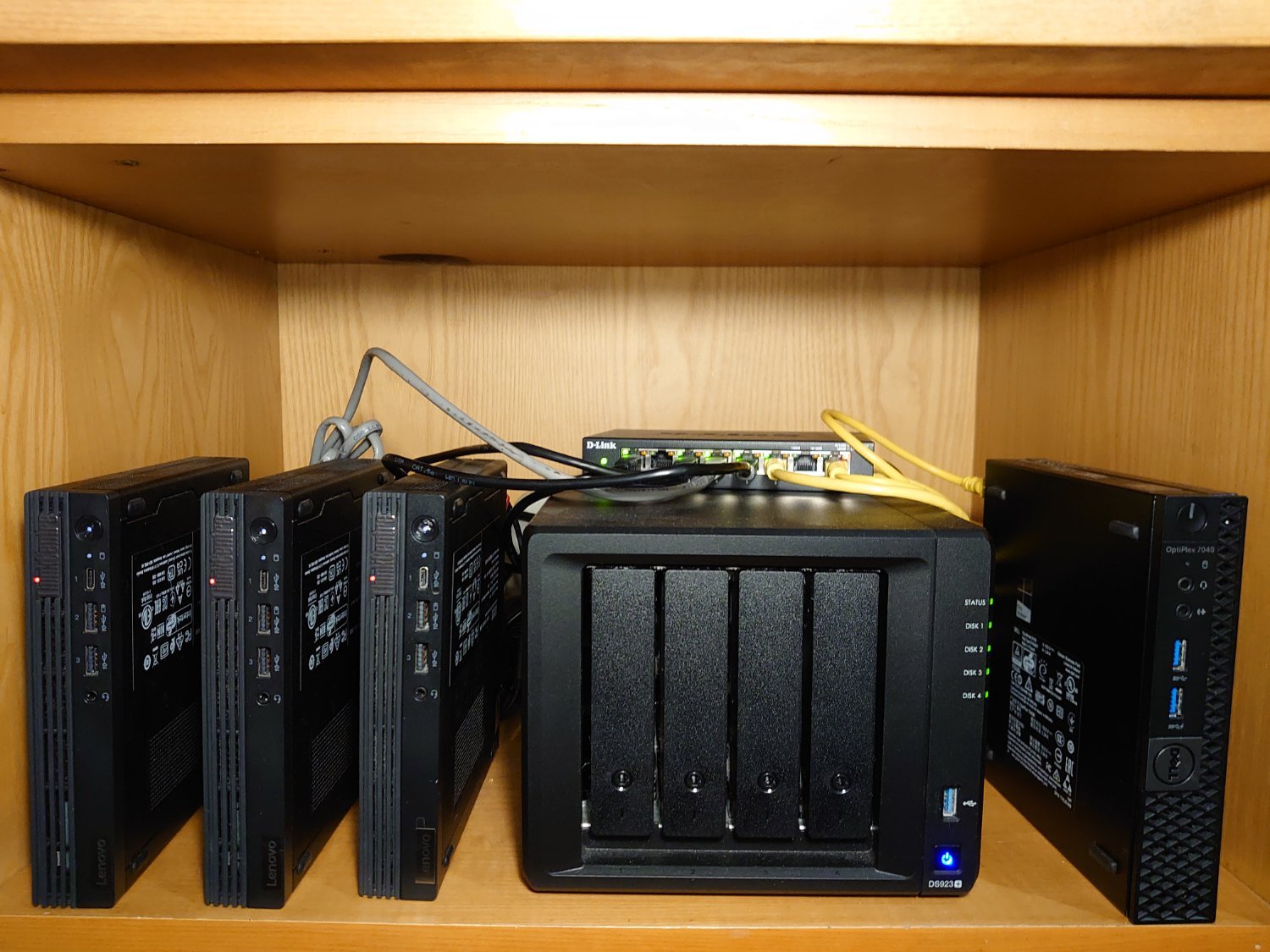
My little cluster
Got the same optiplex to eventually replace the pi.
Nice and clean.
Very easy to find good deals (and parts) on these 1L business PCs!
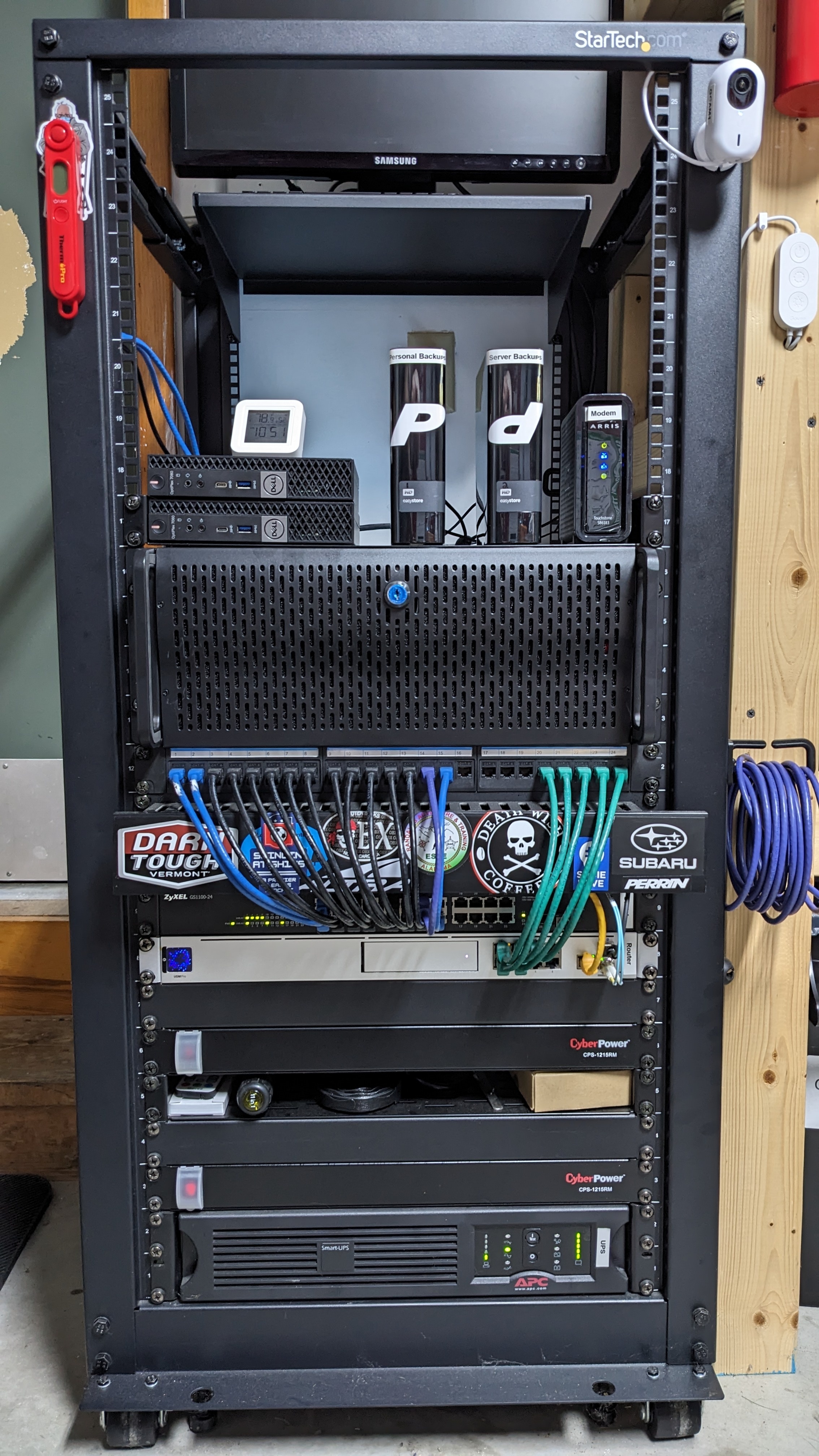
Optiplex gang represent
deleted by creator
How do you like immich? Any thing you don’t like? Favorite features etc? I have a setup I built, but, immich looks very nice
Install Linux on both ps4 and switch and selfhost something on them
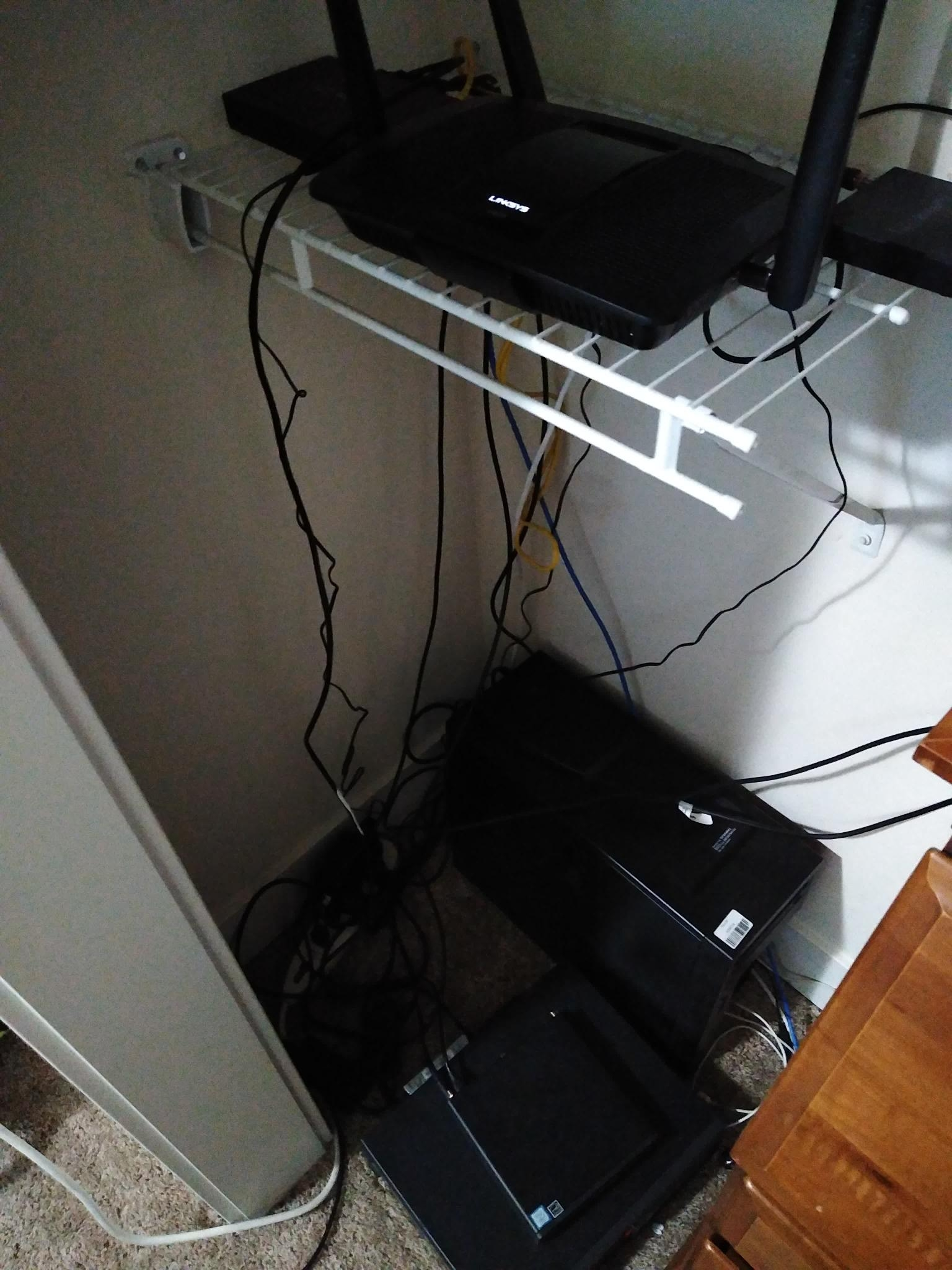
What are those machines on the floor?
The meat and potato’s of my homelab. It is just a Proxmox cluster hosting some things.
Most of it is pretty ordinary as I just have a bunch of Debian VMs hosting docker compose. Ansible for deployments and I am working on moving completely to NFS for storage.
The two notable things I have is a virtualized NAS running TrueNAS and a virtualized desktop running Linux Mint. The NAS has a pcie sata controller passed though with two SSDs and the desktop has a RX580 and the USB controller passed though. The tower seen in the back has both of those currently and what you can’t see is my monitor, keyboard and mouse.
Here are the services I’m running:
-
Jellyfin
-
For movies and live TV
-
Nextcloud
-
my files and the Nextcloud suite
-
Matrix
-
not really used much
-
my website (it is not much at the moment)
-
I’m using busybox http
-
Graphana and Influxdb
-
monitoring. I will eventually move to something else.
The hardware is the follows:
-
Dell precision tower with a i7-6700k and a standard ATX power supply
-
Lenovo think center with a i5-8500
-
HP whatever its called with a i5-8500
Also the router and my AP (not in picture) is running OpenWRT with vlans
-
Mines nothing special, i5 10400 with 16GB of RAM and a 1050ti for video encoding. System runs TrueNAS Scale for Plex and Immich and has 44TB of drives running through a Dell H310 PERC SAS card. I desperately need more storage but I’ve been lacking the funds for new drives, I’d also need a 5.25" drive bay converter to hold the 2 additional drives I need in this case since all the bays are full, and another SAS card since this one’s used up.
I’d like to move to Jellyfin but from what I’ve read it doesn’t do as well for streaming from outside the network compared to Plex and half the users of my server are outside my network. So it works for now.
Also have a Raspberry Pi 5 running PiHole
Also a buddy 3D printed a fan mount for the H310 to make sure it doesnt overheat when doing file transfers and I slapped a Noctua on it

deleted by creator
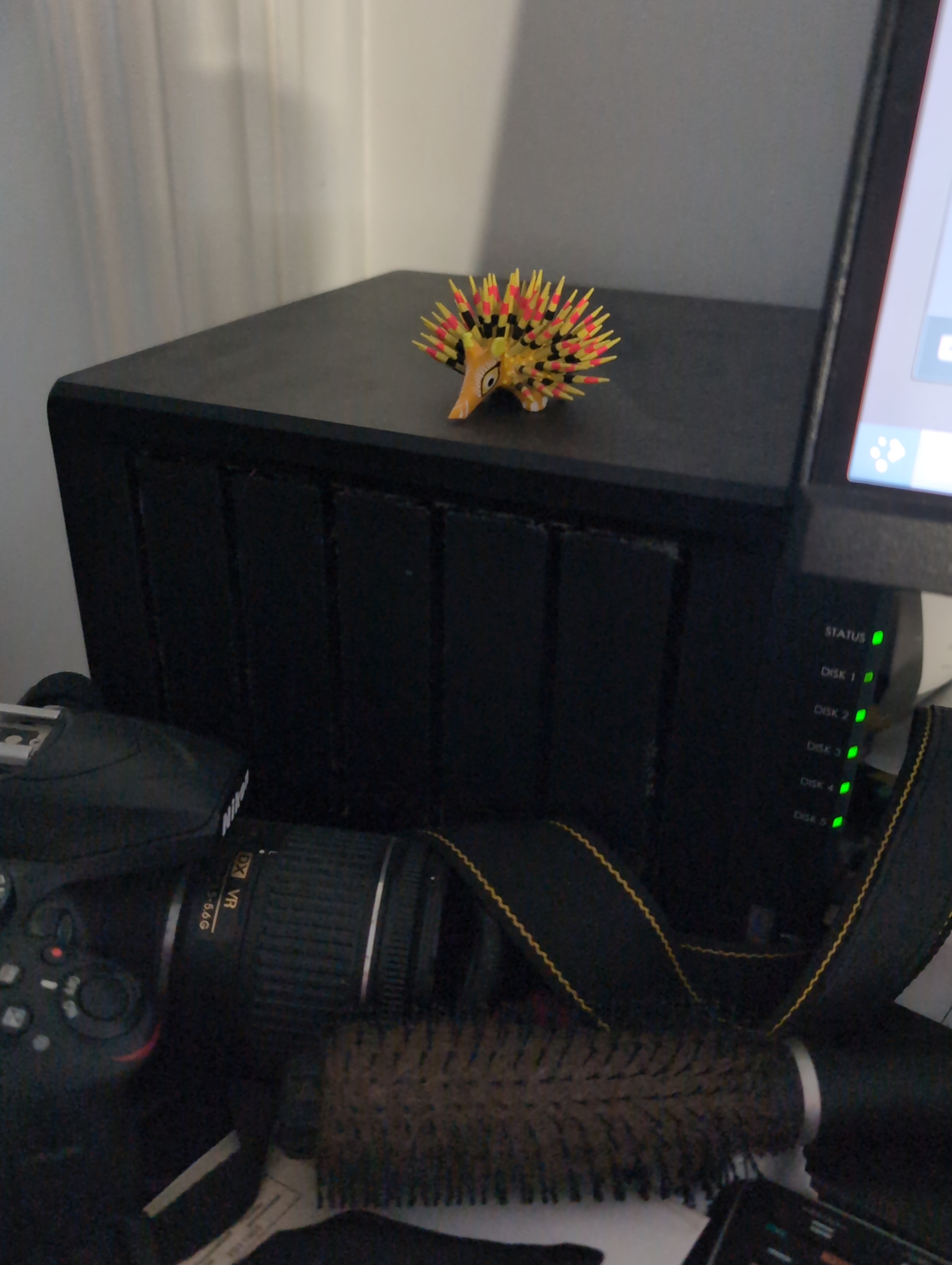
Synology NAS running media server + live document editing server + seedbox. Plans to eventually build a proper server for it. Can’t wait until my setup looks like the rest of yours.
The alebrije on top protects from bad torrents (only linux isos :v) and viruses.
Old setup:
Lenovo ThinkCentre M900 that I bought refurbished for ~€130
- i5-6500T (Passmark score 4792)
- 8GB RAM
- 512GB SATA SSD + 128GB SATA SSD (completely used for swap)
- Buffalo DriveStation™ HD-WLU3 that I bought second hand for €10
- 2 × 2TB SATA HDD’s in RAID 1
- ~20W
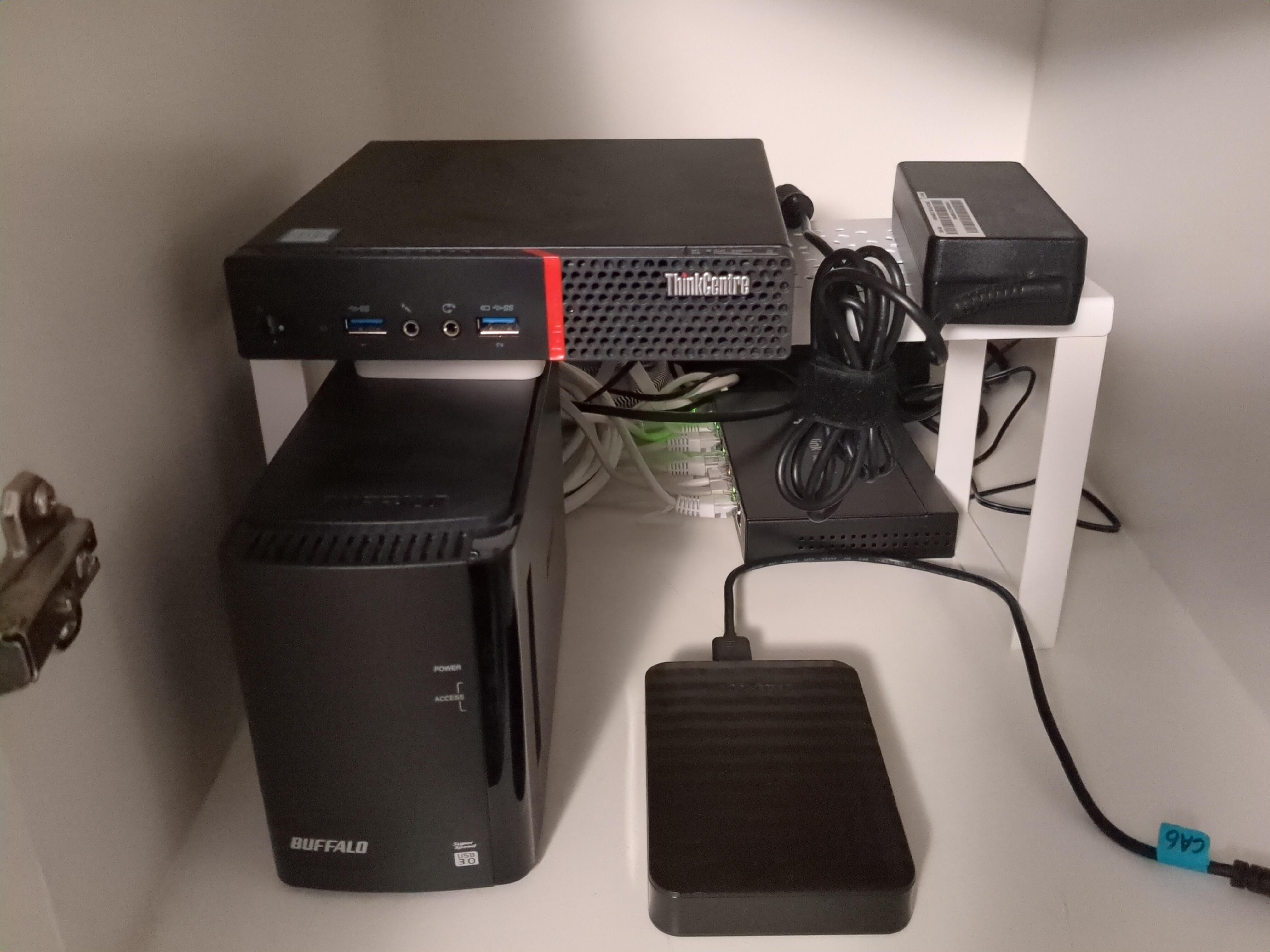
New setup:
Custom build
- ASUS Prime N100I-D D4 (Passmark score 5501) (~€100)
- 16GB RAM - Crucial CT16G4SFRA32A (€28)
- 512GB SATA SSD
- 4 × 4TB SATA HDD’s in RAID 5 using mdadm (€160)
- M.2 NVME to SATA 6x (ASM1116 for C-states) (€17)
- 17.8W
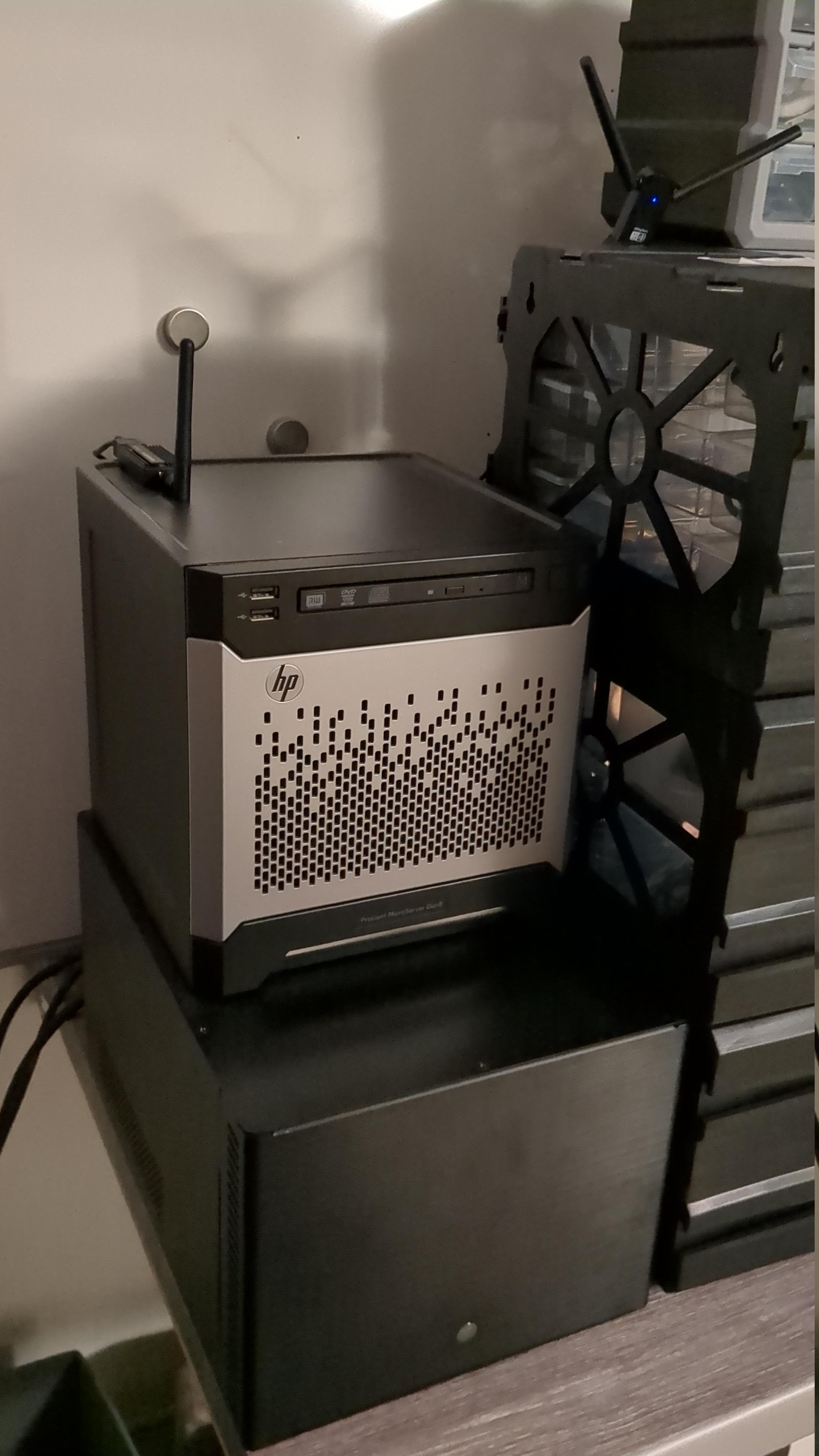
(Not the Proliant Microserver Gen8 on top, the device below)
The antennas are from a Sonoff Zigbee dongle and a bluetooth dongle for Home Assistant.
I’ve mostly focused on power usage, price, and reliability since I’m a student and don’t want to spend a month’s worth of income on a “home lab”.
It’s running the following:
- Forgejo
- Grafana
- Home Assistant
- Jellyfin
- Kopia
- Nginx-proxy-manager
- Paperless NGX
- Photoprism
- Syncthing
- TimescaleDB
- Uptime-kuma
- Vaultwarden: As backup
- Watch Your LAN
- Arr stack (currently disabled)
- Homebox: Still up for testing, like it has been for the past couple months. It’s a great concept but the execution ain’t great (does anyone happen to know an alternative?)
It’s using about 10% CPU and is running below 40°.
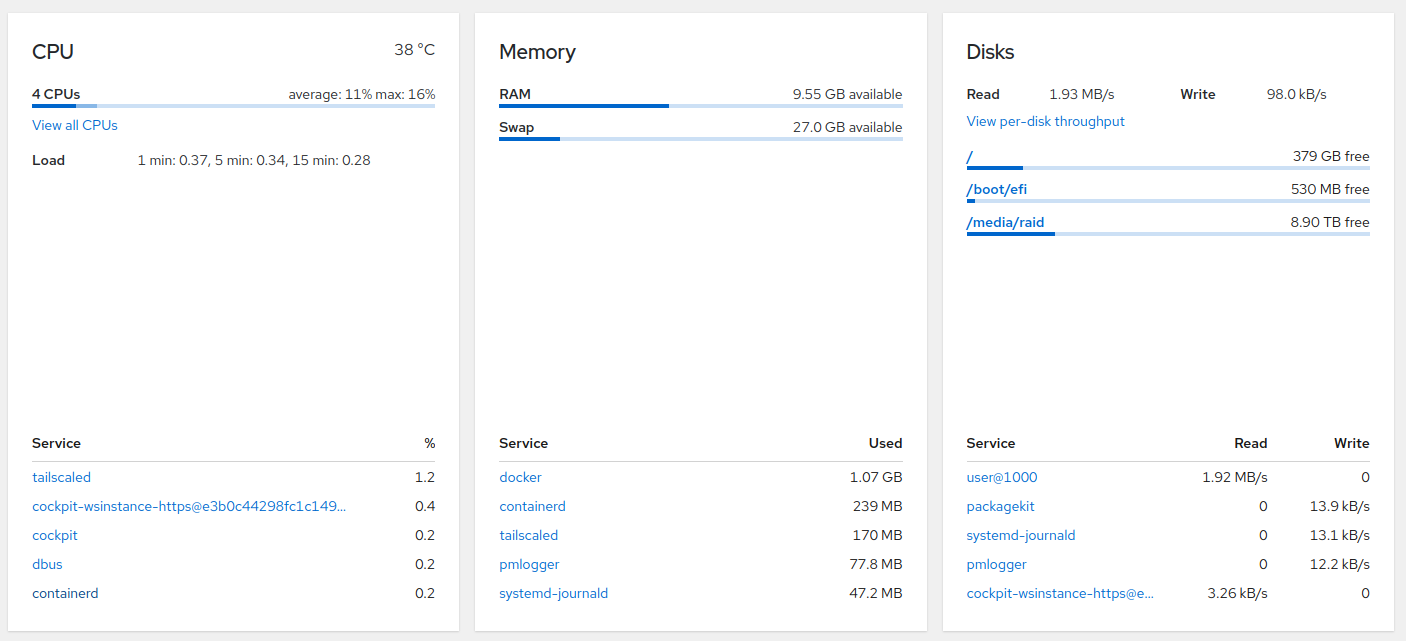
I have three of those Proliant Microserver Gen8’s. Two of them are part of my Proxmox cluster, and the other one is waiting for me to install Proxmox on it.
I’m currently just using it for occasional backups (it has 12TB storage) since the power consumption (60W idle when in the BIOS) is just unreasonable.
Seven Raspberry Pi 4’s and one Pi Zero, mounted on some tile “shelves” inside some IKEA furniture.

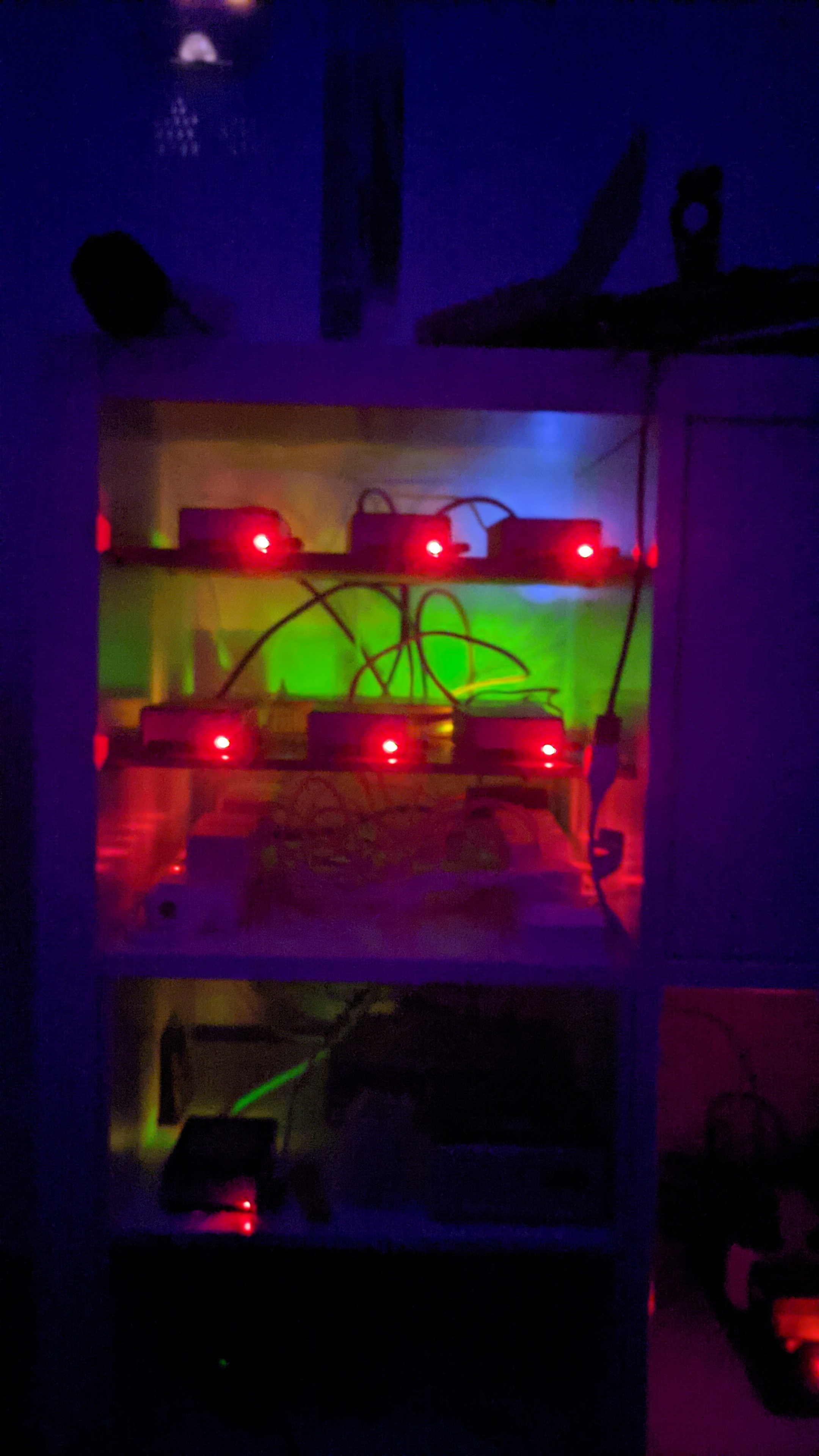

What do you do on that many pi’s that could not be done easier on 1 x86 box?
They’re fanless and low-power, which was the primary draw to going this route. I run a Kubernetes cluster on them, including a few personal websites (Nginx+Python+Django), PostgreSQL, Sonarr, Calibre, SSH (occasionally) and every once in a while, an OpenArena server :-)
I did a 4 node Pi4 kubernetes cluster for about 5 years. The learning experience was priceless. I think most notable was learning to do proper multiarch container builds to support arm and x86_64. That being said, about half a year ago I decided to try condensing it all into two n100 nuc-like clones and keep one pi as the controller. For me and my apps and use cases there was no going back. Performance gains were substantial and in this regard I think I was hobbling myself after the educational aspect plateaued.
Actually, as a web guy, I find the ARM architecture to be more than sufficient. Most of the stuff I build is memory heavy and CPU light, so the Pi is great for this stuff.
A bit concerning that it is propped up on a night table and sitting right next to a doorway. There’s only two of us in the house but I would never place electronic equipment like that near a doorway where I myself could just knock it over (because I’ve done stuff like that in the past). Get it on the floor or on the opposite side of the room where no one including yourself can walk or move around near it.
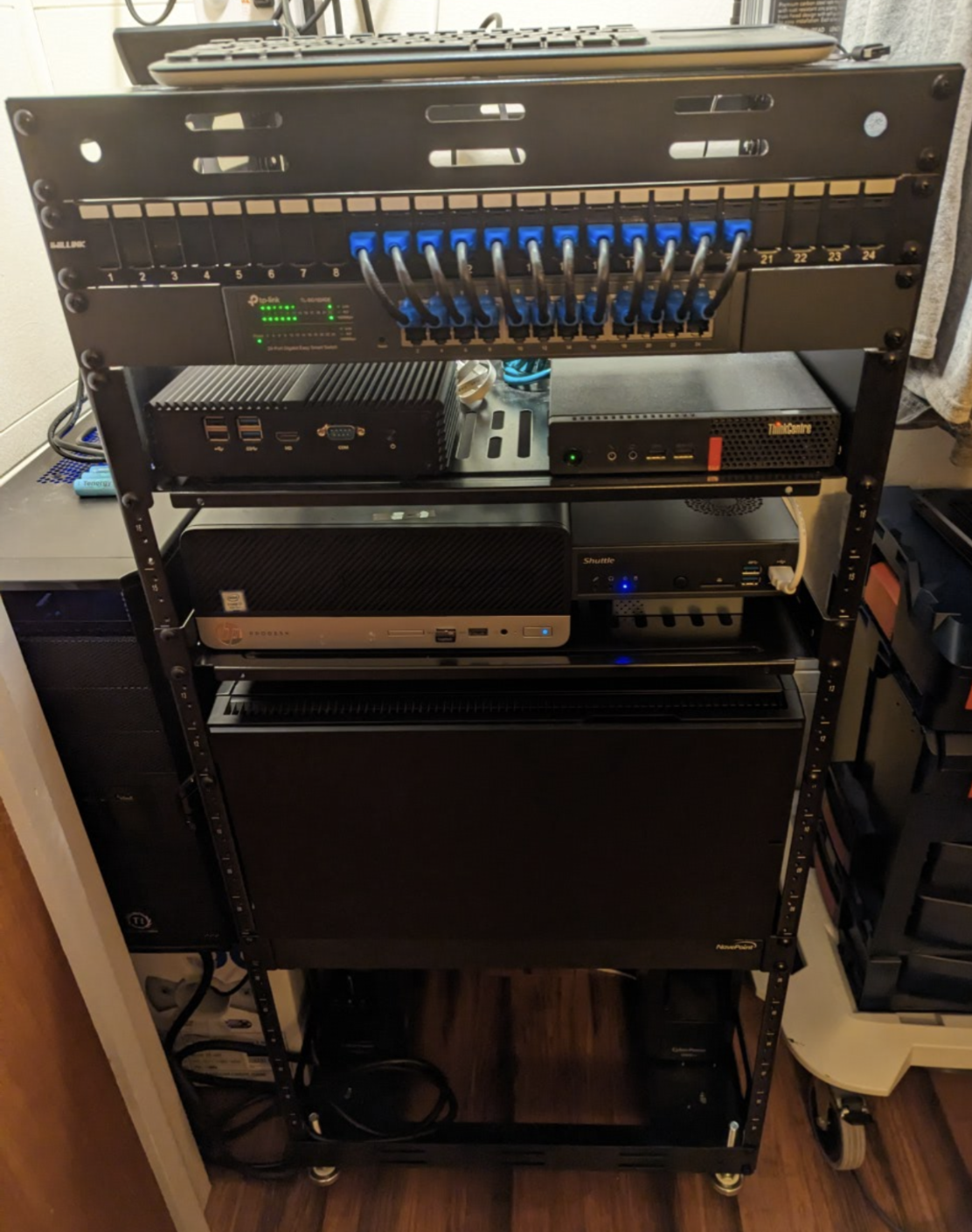 From top to bottom:
From top to bottom:- Patch panel (with artisinal, handmade cables)
- TP-Link managed switch Shelf 1:
- PFSense 4 port firewall
- Lenovo m910q w/Proxmox (cluster node 1) running 2 VMs for docker hosting: Ubuntu for media stuff (arrs, navidrome, jellyfin, calibre, calibre-web, tubesync, syncthing) and Debian for other stuff (paperless-ngx, vikunja, vscodium, redlib, x-pipe webtop, fasten health, linkwarden, alexandrite), 1 Win 10 VM for the very few times I need to use windows, some Red Hat Academy student and instructor RHEL 9 VMs, and an OPNsense VM for testing Shelf 2:
- HP Elitedesk G5 800 SFF w/Proxmox (cluster node 2) with an Nvidia GT 730 passed through to a Debian VM used primarily as a remote desktop via ThinLinc, but also runs a few docker containers (stirling pdf, willow application server, fileflows)
- Shuttle DH110 w/Proxmox (cluster node 3) with 1 VM running Home Assistant OS with an NVME Coral TPU passed through as well as a zooz 800 long range zwave coordinator (the zigbee coordinator is ethernet and in a different room) and two LXCs with grafana and prometheus courtesy of tteck (RIP) Shelf 3:
- WIP Fractal R5 server to replace the ancient Ubuntu file server to the left (outside the rack, sitting on the box of ethernet cable) that is primarily the home of my media drives (3 12 TB Ironwolf drives) and was my first homelab server. The new box will have a Tesla p4 and RX 580 GTX, i7-8700T and 64GB RAM in addition to the drives from the old server. I’ll be converting the Ubuntu drive from the old server into an image and will use it to create a Proxmox VM on the new server, with the same drives passed through. Bottom:
- 2 Cyberpower CP1000 UPS with upgraded LiFePO4 batteries. The one on the left is only for servers and only exists to give the servers time to shut down cleanly when the power goes out. The one on the right is only for network devices (firewall, switch and the Ruckus R500 out of shot mounted higher in the closet)
Nice trapezoid










